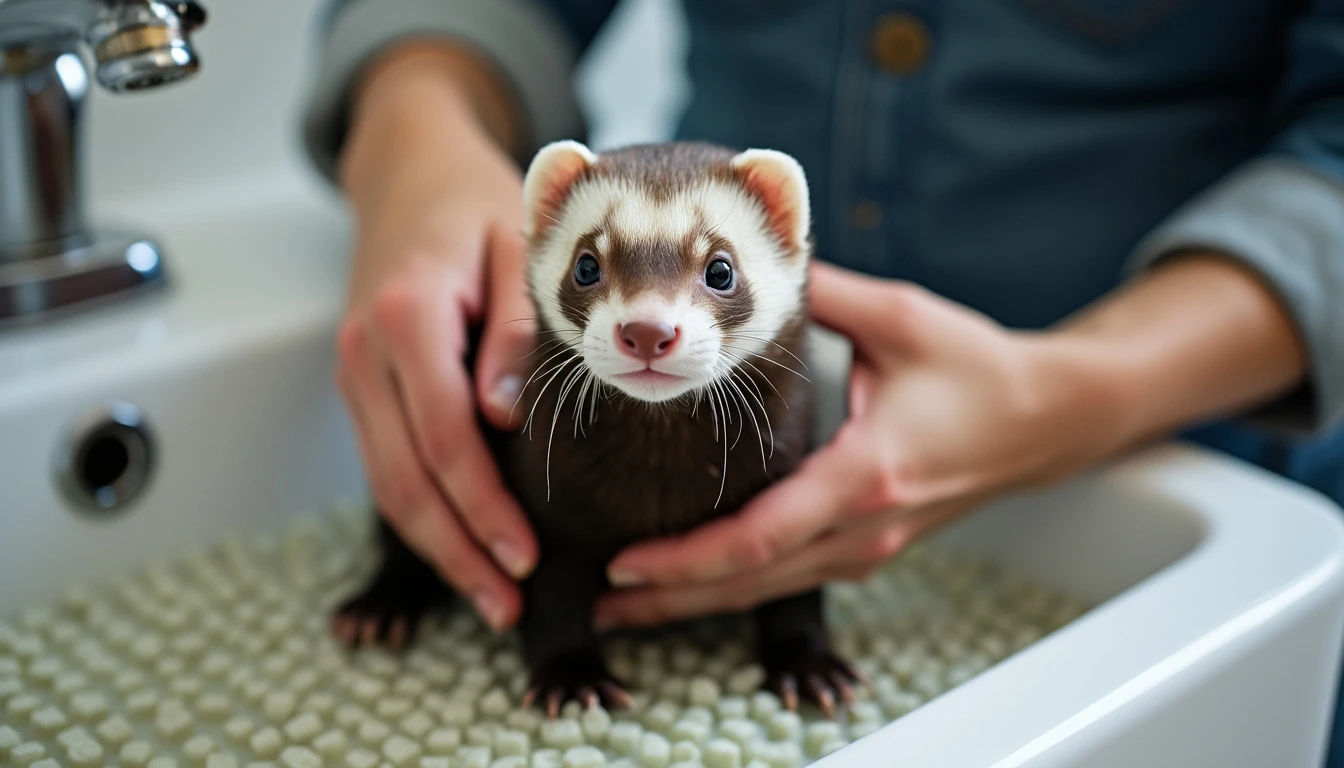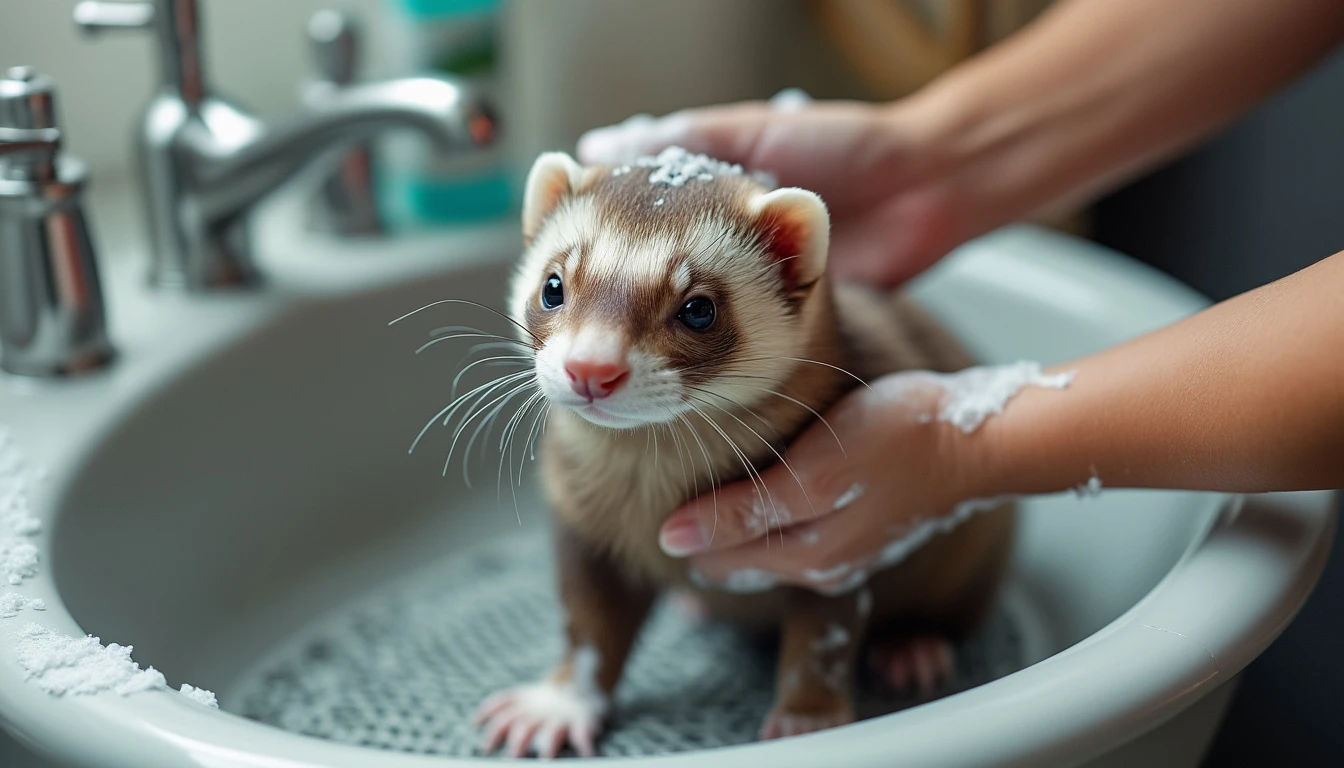Properly bathing a ferret involves more than just the basics of pet care—it’s about understanding the unique needs and behaviors of your ferret to ensure the process is stress-free and healthy. This comprehensive guide delves into expert tips for choosing the right products, handling techniques, and making bath time a positive experience for both you and your pet.
Understanding Ferret Bathing Requirements
Optimal Bathing Frequency Ferrets are clean animals with natural oils that maintain the health of their skin and fur. Bathing them too often can strip these oils, leading to dry skin and other health issues. Ideally, ferrets should only be bathed when necessary, usually no more than once every few months, to manage dirt buildup or medical needs.
Selecting the Right Shampoo
The choice of shampoo is crucial for maintaining your ferret’s skin and fur health without causing irritation.
- pH-Balanced Ferret Shampoos: These are specifically formulated to suit the natural skin pH of ferrets, which helps in preventing skin irritation and dryness.
- Fragrance-Free Baby Shampoo: If ferret-specific products are unavailable, fragrance-free baby shampoo is a gentle alternative that can safely be used without harming your ferret.
- Veterinarian-Recommended Medicated Shampoos: For ferrets with specific skin conditions, it’s essential to use medicated shampoos prescribed by your veterinarian to treat and manage these issues effectively.
Ferret Anatomy and Bathing Sensitivities
Understanding your ferret’s anatomy can help prevent discomfort during bath time, especially considering their sensitive skin.
- Ear Safety: Ferrets’ ears are sensitive and prone to infections if water is allowed to enter. Always take care to avoid getting water into their ears during the bath.
- Eye Protection: The eyes should also be shielded from shampoo and soap, as these can cause irritation or harm if contact occurs.
- Skin Health: Knowing how to handle your ferret’s skin and fur during baths is vital for preventing dryness and maintaining their natural oil balance.
Step-by-Step Guide to Bathing Your Ferret
Preparation: Before starting the bath, gather all necessary supplies such as shampoo, towels, a non-slip mat, and a washcloth. This preparation helps ensure that everything you need is within reach, making the process smoother and quicker, which can help reduce the stress for your ferret.
Bathing Techniques:
- Water Introduction: Gradually introduce your ferret to the water, which should be lukewarm. Allow them to get comfortable with the water’s temperature and depth slowly.
- Applying Shampoo: Gently massage the shampoo into their fur, avoiding the face, ears, and eyes. Be thorough yet gentle to ensure their comfort.
- Rinsing: It is crucial to rinse all shampoo residue thoroughly as leftover shampoo can cause skin irritation and discomfort.
- Drying: Carefully wrap your ferret in a soft towel and pat them dry. Avoid air drying, which can leave your ferret feeling cold. A hair dryer set on a low, cool setting can be used if your ferret is not stressed by the noise.

Advanced Handling Techniques for Resistant Ferrets
Some ferrets may resist bathing more than others, which requires additional strategies to ensure their comfort and safety:
- Behavioral Conditioning: Gradually acclimate your ferret to the bathing process by slowly introducing them to the elements of bath time, such as water, over several days or weeks.
- Distraction Techniques: Utilize toys or treats to make the bath experience more positive and divert their attention from the stress of bathing.
- Secure Handling: Make use of bathing bags or wraps designed for pets to securely and safely restrain your ferret if they tend to be particularly squirmy.

We encourage you to share your experiences and tips about bathing your ferret in the comments below. Your input is invaluable to our community and can help other ferret owners improve their techniques. If you have questions or need advice, feel free to ask. Your engagement helps us all grow and learn together.
Join our community by subscribing to our newsletter for more expert pet care tips, and share your own ferret bathing stories in the comments section below.
By following these detailed instructions and considering the specific needs of your ferret, you can make bath time a positive and stress-free experience. This not only ensures the health and hygiene of your ferret but also enhances your bond with your pet.
